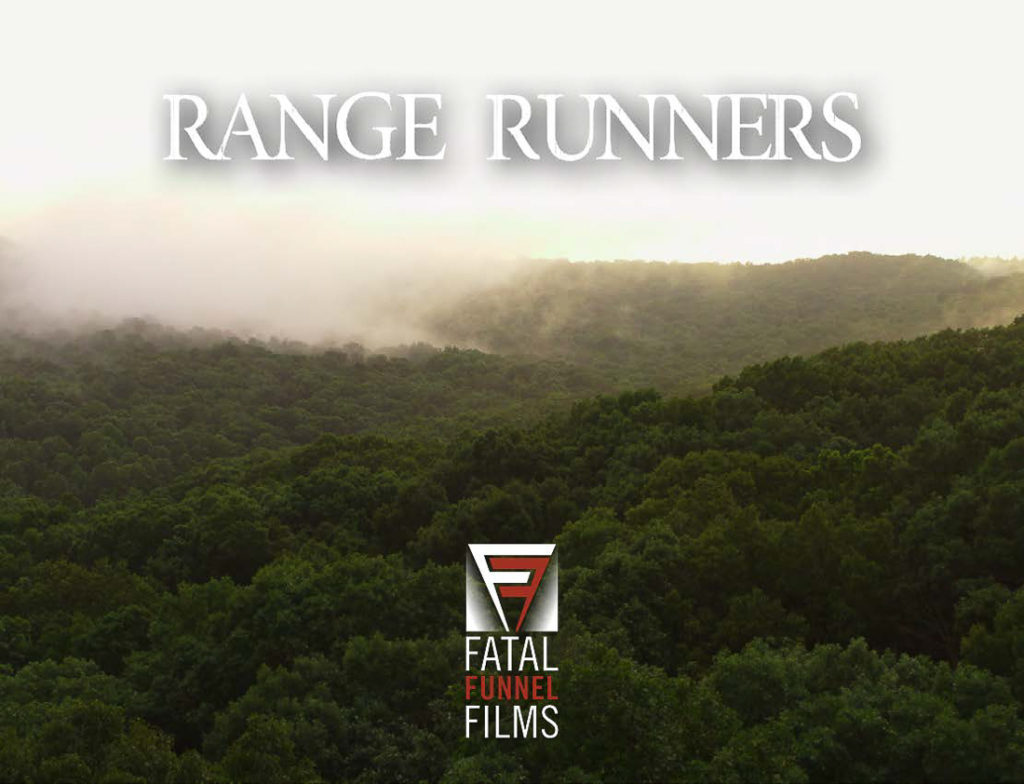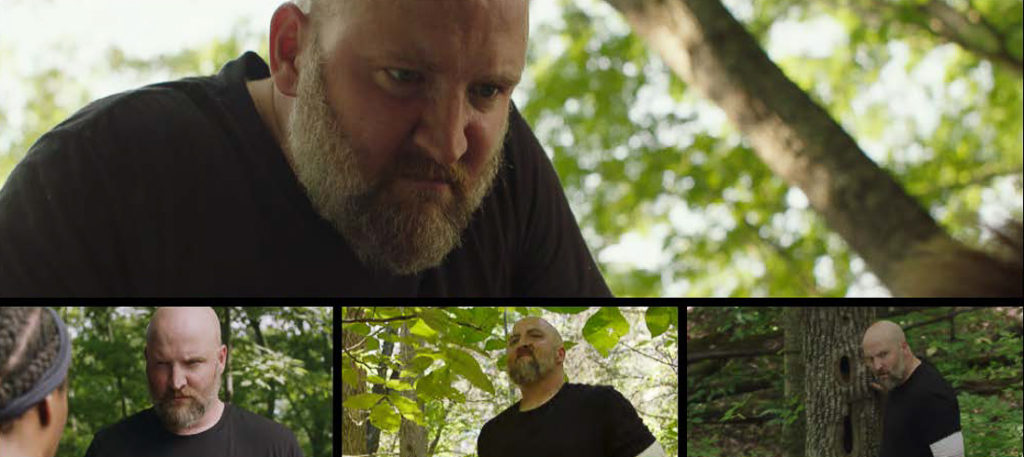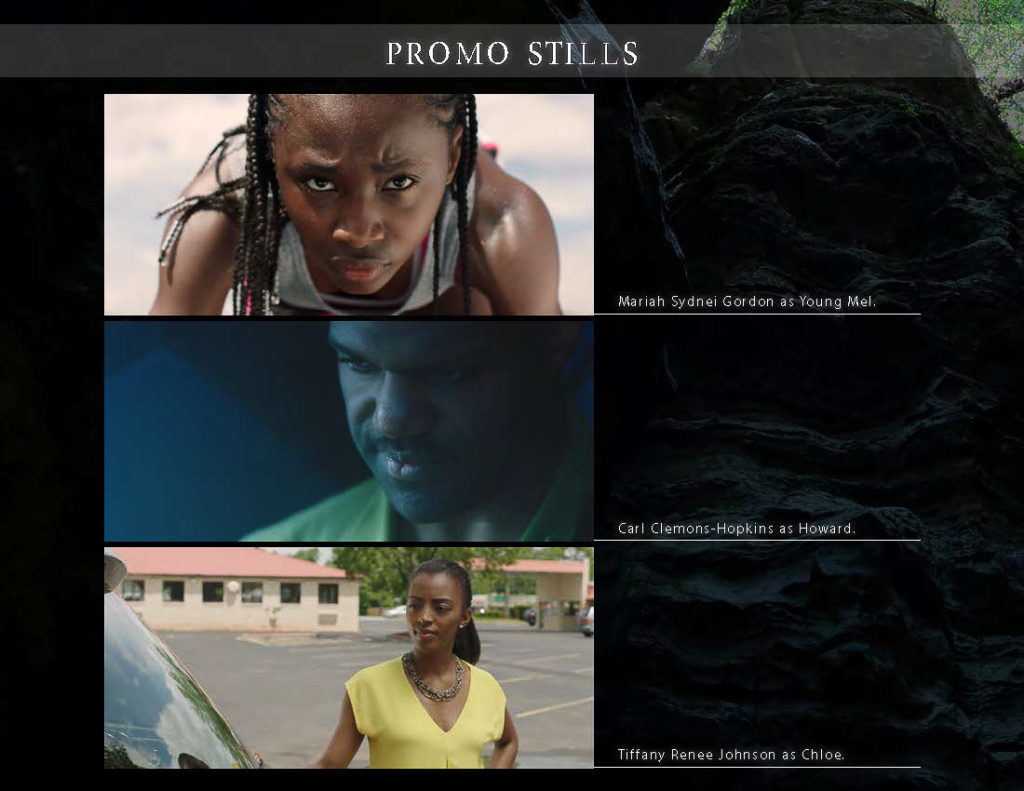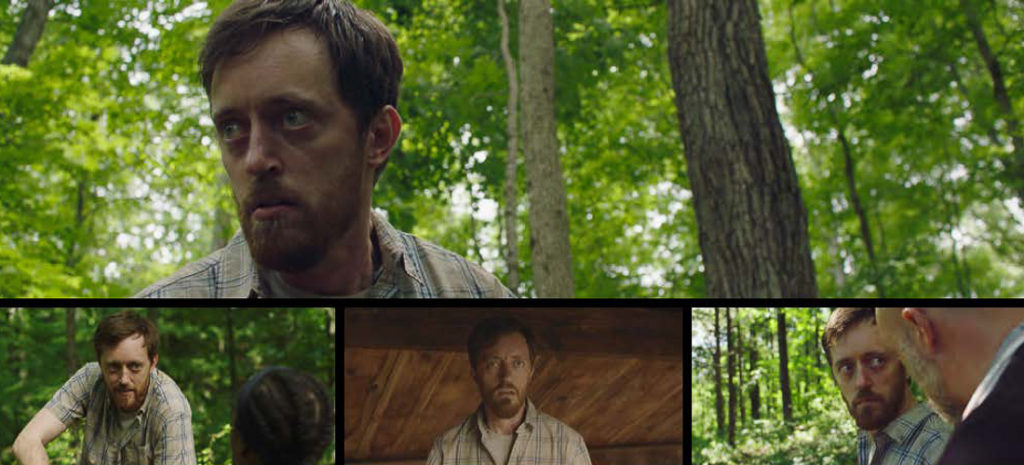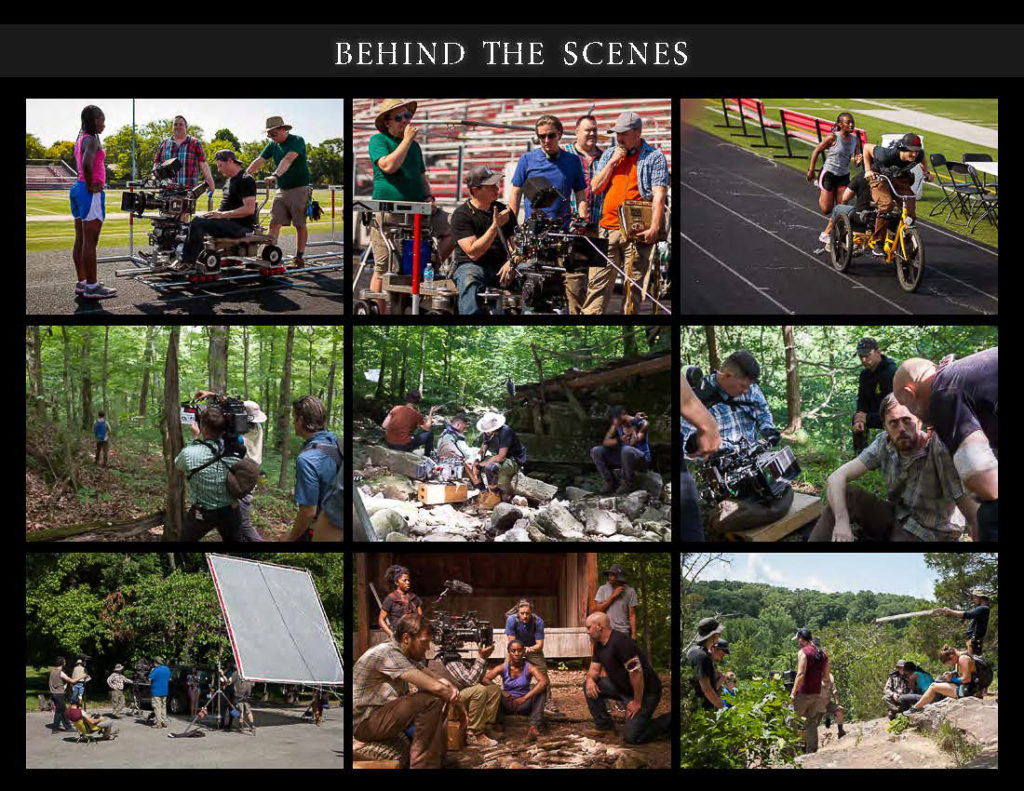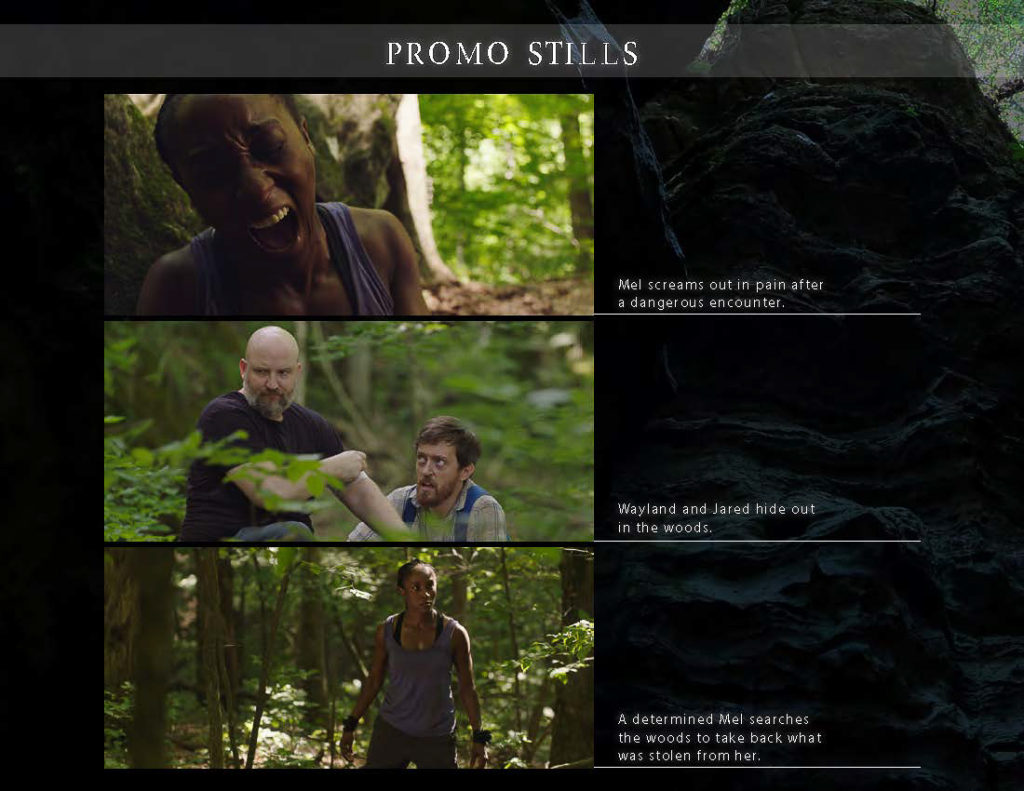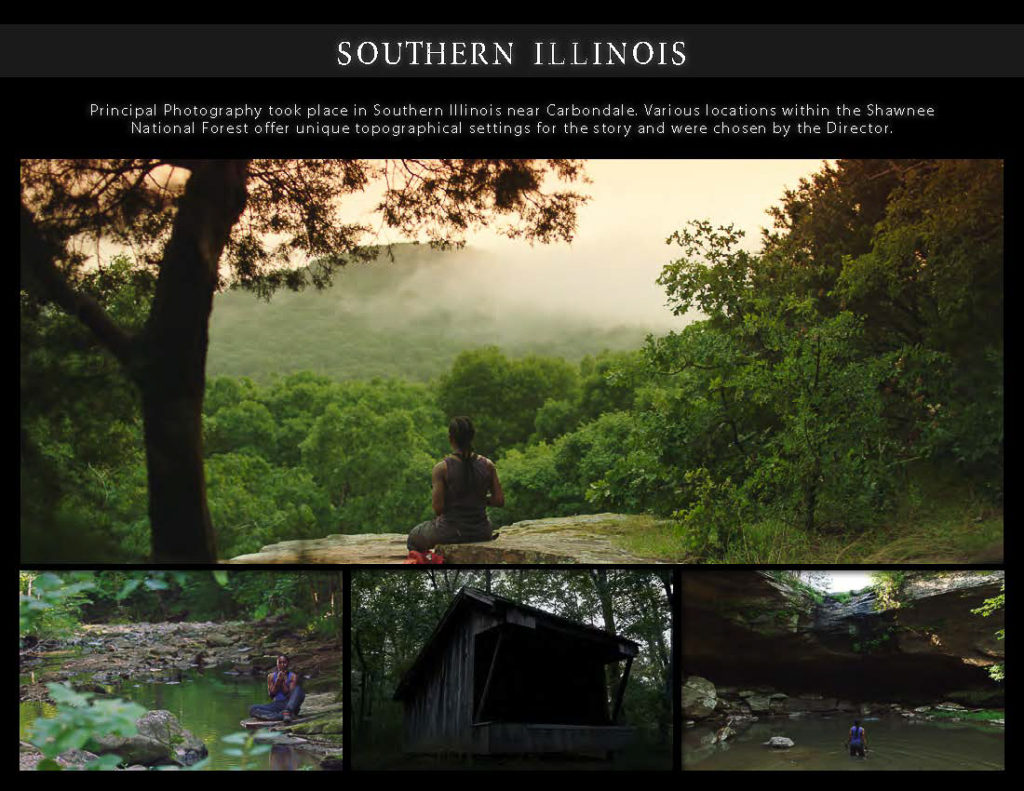Range Runners, starring Celeste M. Cooper, is a thriller about a woman who is running through a secluded trail and gets into a life or death survival situation after crossing paths with a couple of criminals who are hiding out on the trail.
SCREENING Friday April 26th, Santa Monica Laemmle 7pm:
Tickets: https://www.laemmle.com/films/?title=range%20runners&sort=title&limit=40
Dir. Philip S. Plowden, Writer Devon Colwell, Producer Christian Crocker, Starring Celeste M. Cooper as MEL RANGE RUNNERS is a Fatal Funnel Films:
Interview by Kaylene Peoples
Responses by: Devon Colwell, Philip S. Plowden, Christian Crocker, and Celeste M. Cooper
Kaylene Peoples: Tell me a little about your film and what inspired you to make Range Runners.
DEVON: A couple years ago I was hiking a small section of the Appalachian Trail in the Smoky Mountains with my wife, Megan, and was telling her that I had always fantasized about one day dropping everything and hiking the entire trail from beginning to end. She made a comment that she couldn’t imagine doing that herself, and so that put me in a position of considering what it would be like for her if she found herself in that scenario, the kinds of challenges and mindset that might be involved in that endeavor… things that I wouldn’t even think about. The thing that attracted me to the story was this displacement; having to take myself out of my own shoes and put myself into someone else’s, which is always a good starting point for exploring a character.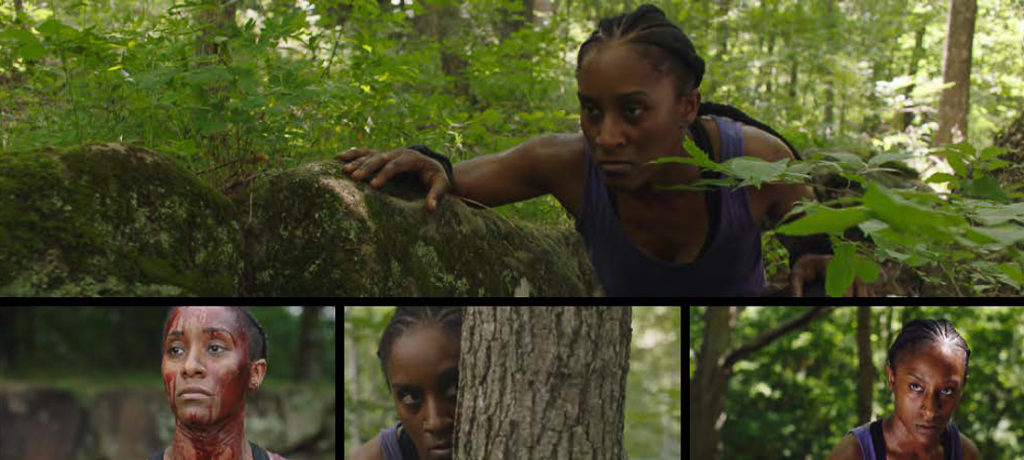
PHILIP: Range Runners is a thriller about a woman who is thru-running a secluded trail and gets into a life or death survival situation after crossing paths with a couple of criminals who are hiding out on the trail. The idea was one my business partner, Devon Colwell conjured up while hiking the Appalachian Trail with his wife. Both Devon and I love being out in nature and hiking and we have an affinity for thriller films. I come from a competitive, athletic background, so the active elements in the film were of great interest to me. Once we started in on creating the outline and the script, it was a perfect fit our company’s inaugural feature film.
Kaylene Peoples: Tell me a little about your film and what inspired you to make Range Runners.How long did it take to complete the film? What was it shot on? Tell me about the filmmaking process.
CHRISTIAN: All things considered, we pulled off a pretty quick turnaround from the conception of the story to completing the final cut of the film. Phil and Devon came up with the story towards the end of 2017. The script was finished in January, we assembled our crew and key players by March, completed principal photography in June, and wrapped post-production in October. Maintaining this pace throughout all phases of production is a testament to the efficiency of our talented cast and crew.
DEVON: We shot the film in 18 days, but for me the complete filmmaking process really started with the conception of the story. It took us a little under a year to go from the initial story pitch to actually filming the movie, with a few months of post-production afterward. All in, we are just under two years of deep involvement on this project. Because I am both the writer and an executive producer on the film, there’s really no point where I let the film out of my grasp, so the immersion is constant and sometimes relentless, but that’s what makes the whole process so intriguing for me. Even though there is collaboration and contributions from other creatives, my hands are always in it. Up to the elbow, it seems.
PHILIP: We shot Range Runners in 18 days. 2 in Park Ridge Illinois for the flashback sequences, and 16 days down in the Shawnee National Forest of Carbondale, Illinois. I would’ve loved more but we didn’t have the budget so this was it. 18 and out.
Kaylene Peoples: Tell me a little about your film and what inspired you to make Range Runners.We shot the film digitally with an Arri Alexa Mini. We also had a drone, cable cam and MOVI rig along for the ride.
The filmmaking process was the most creatively challenging and rewarding experience of my career. It was often hellacious and we didn’t have time to stop and ponder how to do things differently. We had to adjust everyday and despite my organization in pre-pro, there were things we had to change on the fly almost daily. It was fast-paced and part of that was due to budgetary restrictions but also as a director, I like to keep things moving along. I don’t want to get bogged down on a particular scene if I can help it. We had massive days scheduled with huge sequences all set to take place inside of a single shooting day. Big stunt setups, complicated action pieces all set in remote wilderness locations so needless to say, this was a highly ambitious shoot for our budget bracket.
Let’s talk about the cast and crew. Tell me about who was involved and particularly your key players.
DEVON: We had people we were able to go to pretty much from the start, that were really integral to getting the film off the ground. Christian Crocker is a long time producing partner for Philip Plowden and I, and we also got Rosemary Prodonovich and Christopher Ganze on our team really early in the process. Darryl Miller, our Director of Photography, and Aaron Crippen, who was our stunt coordinator, were also some of the first people who gave us feedback and started brainstorming on how to bring the script to life, even before the final draft had been written. In terms of key players, though: when you’re on a budget of this scale, every crew member is key, and everybody’s contribution is critical and immeasurable. That’s the beauty of making an indie film… no one is showing up just for the paycheck, and everyone is going all in to make the film happen because without each and every one of them, it would all fall apart.
PHILIP: First and foremost I wanted to work with an entirely local, Chicago cast. I wanted this to be homegrown and I wanted actors who would be willing to go the extra mile on set in these rigorous elements. Celeste M. Cooper nailed her audition for Mel our lead and was a joy to work with. She epitomizes the character of MEL and worked tirelessly to bring her to life. Then we had Sean Patrick Leonard and Michael B. Woods filling the roles of the villains and the two of them formed an incredible chemistry together. Mariah Gordon and Carl Clemons-Hopkins played YOUNG MEL and her father. They went through some incredible tests of endurance working out on the track & field. Tiffany Renee Johnson and Sarah Charipar also played key roles in the film.
For the key crew members, we had a fantastic producing team. Christian Crocker has been a long-time collaborator with Fatal Funnel Films and was an integral part of this project from the start and currently with the distribution and sales avenues we are pursuing. RoseMary Prodonovich and Christopher Ganze were integral to keeping things on track as well.
Darryl Miller was our director of photography and he’s been in this business for 20+ years. Darryl and I started plotting our shots and sequences long before we started shooting and his contributions were vital. My long time friend Aaron Crippen was our stunt coordinator and he came aboard and designed all of our exciting action sequences. He also worked with the cast to get them comfortable with doing a lot of the stunt work themselves.
Caitlin Maldonado brought our sets to life as the production designer out in the wilderness and with the old hiking shelter. Every member of our crew went above and beyond for this project. I’m grateful to have had such a dedicated group along for the ride.
Kaylene Peoples: Tell me a little about your film and what inspired you to make Range Runners.
CELESTE: My experience was a cross between several Fear Factor episodes – keeping myself energized and trusting the Range Runners team. I had to experience and do things I typically never would, but I’ve always been up for a challenge. It was gritty, exhausting, but the people on set made it worthwhile.
Kaylene Peoples: What drew you to this film?
CELSTE: I was drawn to the film because of my connections to the story. Like Mel, I ran track amongst other sports because my dad pushed me to do so. I was raised with tough love and due to that I am resilient.
Kaylene Peoples: Tell me a little about your film and what inspired you to make Range Runners. What were some of the most memorable moments on set?
CELESTE: My favorite moments were problem solving, getting ahead of schedule, and always joking & laughing with the team.
DEVON: For me, it was while we were filming a key scene up on a steep ridge line in the mountains. It was the only day of rain we had for almost the whole filming schedule, and the rain was really going to kill this particular scene, but we decided to set up for it and hope for the best. It was looking pretty bleak, but just before we lost the daylight, the film gods decided to smile down on us… not only did it stop raining just in time, but the clouds parted and the sun came beating through just before it set. Not only did this give us the exact look we were hoping for, but as an added bonus, the fresh rain started to evaporate, giving us an unexpected recreation of the kind of mountain mist that gives the Smoky Mountains its namesake. Since this was the place that inspired the original idea for the story, it felt like everything was going full circle for me, and every time I watch that scene in the movie I think about how serendipitous it was that we were able to capture that atmosphere on film.
Kaylene Peoples: As a filmmaker, tell me about your background.
DEVON: When I was 11 years old, I decided that I wanted to be a novelist, and have been writing ever since. Ten years later, during one of my deployments to Iraq while serving in the U.S. Marine Corps, I decided that I wanted to go to film school after my active duty enlistment ended. After that, my writing ambitions naturally shifted toward screenwriting. For the last several years I have had the fortune to break into the business on the crew side of things, which has given me a lot of valuable hands-on experience in how a movie gets made, and all the things that go into it. It’s also how Philip and I first started sharing our goals of making our own movies, and led to the founding of our company, Fatal Funnel Films.
PHILIP: I went to Columbia College Chicago for film & video and fell in love with the storytelling process. I started working on indies in 2006 and I’ve worked a variety of jobs in the business. I have worked as a producer on several indie feature films in Chicago. I also work as an Asst. Location Manager on the Chicago PD TV show. In 2014 Devon and I decided to start Fatal Funnel Films in order to tell our own stories.
Kaylene Peoples: What would you say is unique about this film? Were there any challenging moments during production?
DEVON: One of the challenges of making this film is also one of the things that I think makes it stand out, and that was the environment. We had no stage sets, and everywhere we filmed was a location that we actually had to find out in the wilderness, often hiking in with gear in tow. It made for some rough load-ins, but as a result there’s hardly anything in the world of our film that we had to fake. We aren’t asking our audience to imagine anything that we didn’t actually experience ourselves during the course of our production, and I think what appears on camera speaks for itself in terms of the authenticity of our environment.
PHILIP: I feel the uniqueness of this film centers around our main character and her journey. Her story is unique because of what she is putting herself through and the choices she makes in order to get herself into these different scenarios throughout the film. She is very much her own person. We don’t have a damsel in distress scenario here, she’s not being rescued by a man, nor is she being sexually exploited by one. We also wanted to make sure we had time to get to know her before all the chaos kicked in so the first act of the film is more of a slow burn than a many of the survival thrillers I’ve seen. My hope is that this pays off and when she’s struggling in later moments, the audience is right there experiencing the visceral nature of it all with her.
Challenging moments occurred daily. We had stunt performers rolling down 42-foot washes, our lead actress hanging from cliffs strapped in by cables, we had huge scenes to shoot out in one day because we couldn’t afford two. The natural elements, the sweltering heat, the remote locations that required us to hike in gear, the critters and ticks who paid no mind to our efforts to deter them. It was a glorious concoction of woodland adventuring and logistical problem solving.
Kaylene Peoples: What were some of the highlights of filming Range Runners?
CHRISTIAN: Those timely moments of laughter. Look, it’s a grind every day on set, you’re under stressful conditions, it’s hot, you’re tired, you’re covered in ticks, and everyone is doing their best to make our days. Then Michael B. Woods, who plays “Jared” one of film’s primary antagonist, belts out a spot-on Christopher Walken impression in-between takes, and everyone cracks up. We all share that moment of laughter and it kind of reminds everyone, we’re out here making a film, it should be fun.
DEVON: The setting of the film made every day an adventure. Being outdoors, on location, in the terrain that we wanted to focus all of our action on during the film. Since Philip and I are outdoors people to begin with, we were able to find moments every day where we could just immerse ourselves in our surroundings and some of the stress of making the film melted away. One of the best parts of our day was when our sound department would need everyone to stop working and remain quiet so they could get room tone at every location, and it was a moment where everyone was forced to just stand still and take in the chirping birds, the wind blowing through the trees. It was like we had a little zen moment built into every scene we filmed.
PHILIP: Everyday brought some sort of a highlight. Fulfilling this dream of creating a feature film from scratch came with that sort of mentality for me. Being out in the woods gave me a true sense of adventure. Working with these incredible artists on our cast and crew along with the local property owners and business owners who helped us along the way. Amid the organized chaos I’d say there were a few days that stuck out more than others. When we successfully rolled our stunt double down a 42-foot wash in the middle of the woods with a cable cam whizzing above, I’d say that was an extremely satisfying moment. Another would’ve been the finale of the film when this mist rolled in after a fresh rainfall and Celeste was out on the edge of this cliff. Soaking in the serenity of that moment amidst all the intense chaos of many of the other ones, reinforced why we made this film.
Kaylene Peoples: What were some of the obstacles? On your next project what might you do differently and what might you do the same?
CHRISTIAN: Shooting in the wilderness has its own challenges, especially when you’re five hours south of Chicago in a rural part of the state. You have to utilize every resource available and that comes with careful planning. Inevitably, equipment will break, and other unforeseen obstacles will arise and for that, you have to think quickly as a team and find a solution. One advantage that we had was that we were very fortunate to have filmed in such a filmmaker friendly area. The people of Carbondale, IL really embraced us and offered help all along the away.
DEVON: Every film production has its own unique challenges. I think the key to overcoming them is just to stay open to new shifts in ideas and being prepared to adapt to situations as they arise, because you can’t plan for every contingency. As long as you are remaining true to your vision and getting what you need from every scene to make the movie work, then making compromises along the way is less of an obstacle. The important thing to keep in mind is that film making is collaborative, and no matter how much planning goes into it, it’s something that happens in the moment, so you learn to just go with it, and trust the people around you that they have the film’s best interest in mind.
PHILIP: Obstacles were plentiful: our small budget, tight schedule, remote locations, ambitious script content. I am always learning and looking to advance myself as a storyteller and director. There were many lessons I will take from this project into future films. Sometimes I would get so focused on a particular moment in a scene that the world around me evaporated. Devon and I work closely together on set often going off and having private conversations about a particular scene. It’s how we work, and its effective, but can sometimes feel isolating for the crew.
Kaylene Peoples: What advice could you give to a first-time director/producer?
CHRISTIAN: Before going into production (or any major endeavor), plan ahead as best you can, anticipate what could go wrong and always have a contingency in place. Know what your strengths and weaknesses are and surround yourself with those who compliment your skill set. There will be times when you think you’ll have seemingly run out of options, that’s when you come together as team, trust in those around you, and make it happen.
PHILIP: Dare greatly. This is my passion. I couldn’t imagine doing anything else in life. It takes grit and determination to make a film and you need to hold onto that burning desire to create for dear life because there are many obstacles that can easily shatter it along the way.
As far as being on set goes, I’d say don’t ever be afraid to adapt. Things change by the second in a live environment and you have to be able to adjust no matter what previous plans you’ve been sticking to. Not everyone will like you for it, but as the director you’re the one responsible for the end result. You have to stick to what’s important for the story and get the meat of each scene shot out.

